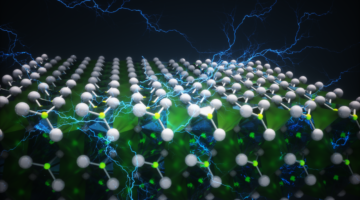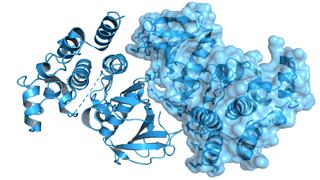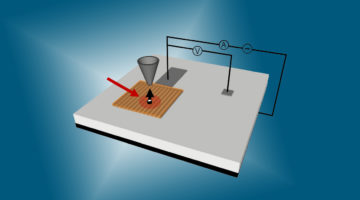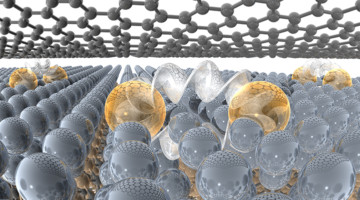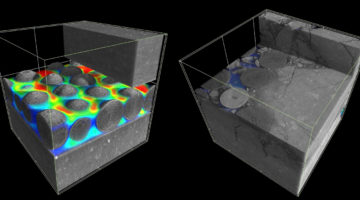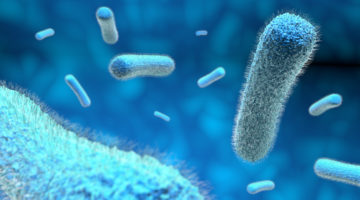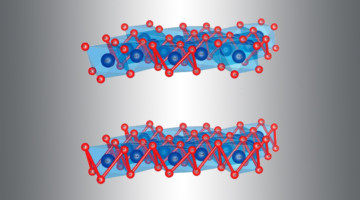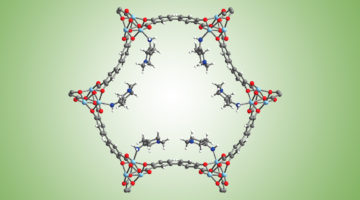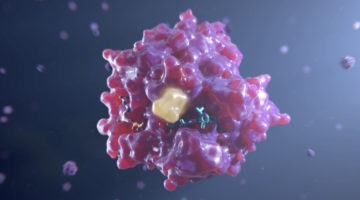Researchers showed that hafnium oxide surprisingly exhibits enhanced ferroelectricity (reversible electric polarization) as it gets thinner. The work shifts the focus of ferroelectric studies from more complex, problematic compounds to a simpler class of materials and opens the door to novel ultrasmall, energy-efficient electronics. Read more »![]()
![]()
Science Highlights
On-Off Switch for Regulating Tumor-Cell Growth
The mechanisms that affect the regulation of cell growth in certain tumor cells were revealed by a Genentech study of enzyme structures, conducted in part at the ALS. The work establishes a framework for the rational discovery of new therapeutics to improve upon currently existing treatments for certain cancers. Read more »![]()
![]()
The Bottleneck Step of a Complex Catalytic Reaction
The rate-limiting step in catalysis involving oxygen uptake was identified through analysis of the reaction pathways and observations performed under operating conditions. The work lays the foundation for improving the efficiency of energy conversion and storage devices such as fuel cells, catalytic reactors, and batteries. Read more »![]()
![]()
A Scalable Platform for Two-Dimensional Metals
Using a new method for stabilizing a two-dimensional (2D) metal on a large-area platform, researchers probed the origins of the material’s superconductivity. The work represents a notable milestone in advancing 2D materials toward broad applications in topological computing, advanced optics, and molecular sensing. Read more »![]()
![]()
Direct Imaging of Fracture Closure in Reservoir Shales
Using x-ray microtomography at the ALS, researchers identified and characterized the microscale factors affecting fluid flow through shale fractures propped open with sand or ceramic spheres. A better understanding of propped fractures can lead to safer and more efficient recovery of hard-to-reach oil and gas resources. Read more »![]()
![]()
Assembly Lines for Designer Bioactive Compounds
Researchers successfully bioengineered changes to a molecular “assembly line” for bioactive compounds, based in part on insights gained from small-angle x-ray scattering at the ALS. The ability to re-engineer these assembly lines could improve their performance and facilitate the synthesis of new medically useful compounds. Read more »![]()
![]()
How a New Electrocatalyst Enables Ultrafast Reactions
With key data from the ALS, researchers discovered how a new, low-cost electrocatalyst enables an important oxygen reaction to proceed at an ultrafast rate. The work provides rational guidance for the development of better electrocatalysts for applications such as hydrogen-fuel production and long-range batteries for electric vehicles. Read more »![]()
![]()
Elusive Kagome Electronic Structures Revealed
Electronic-structure studies showed that both infinitely light and infinitely massive particles coexist in a material with a star-shaped (kagome) crystal lattice. The material’s rich array of electronic behaviors shows promise for future spintronic applications and represents a new frontier for studying exotic phases of matter. Read more »![]()
![]()
Water Improves Material’s Ability to Capture CO2
With the help of the ALS, researchers from UC Berkeley and ExxonMobil fine-tuned a material to capture CO2 in the presence of water. The parties have applied for a patent on the material, which was developed for use on the relatively humid flue gases emitted by certain natural gas power plants, a cleaner-burning alternative to coal. Read more »![]()
![]()
ALS Reveals Vulnerability in Cancer-Causing Protein
A promising anticancer drug, AMG 510, was developed by Amgen Inc. with the help of novel structural insights gained from protein structures solved at the ALS. AMG 510, which is currently in phase II clinical trials for efficacy, targets tumors caused by mutations in the KRAS protein, one of the most common causes of cancer. Read more »![]()
![]()
- « Previous Page
- 1
- …
- 10
- 11
- 12
- 13
- 14
- …
- 27
- Next Page »
